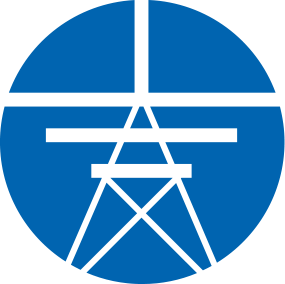Low-voltage grids in transition
Challenges to managing the transformation from passive end user to active grid user
The future energy supply grid in the low-voltage range (grid levels 6 and 7) will no longer operate according to the top-down principle that has been common up to now, in which the load flow was from the higher-level medium-voltage grid to the low-voltage grid and thus to its consumers. The electricity customers connected there, usually consisting of small or medium-sized industrial, commercial and agricultural enterprises and households are predominantly ohmic/inductive consumers (e.g. heating/drive motors). However, this principle is becoming replaced by a grid operation in which the originally passive consumers also become active electricity producers. Responsible for this development are new technologies, including decentralized renewable energy sources (RES) such as photovoltaics, but also decentralized power storage. Likewise, locally distributed, high-performance consumers such as charging stations for electric vehicles or air conditioners/heat pumps are penetrating all layers of electricity consumption right through to the single-family home. Due to the increasing number of such components, whose generation or consumption often fluctuates greatly, former pure consuming customers also become generators (prosumers) for a time. In addition, their output and consumption will increase in the future due to rising volatility on the electricity market. This poses new challenges for the low-voltage grid. Research topics in this environment are dealt with in a scientifically and practically oriented way at the Institute of Electrical Power Systems at Graz University of Technology in the form of research projects, cooperation projects with industry and commerce.

Generation plants
Due to current developments, the low-voltage grid is confronted with an increasing penetration of decentralised renewable power generation systems such as photovoltaic systems.
This large number of decentralised plants can locally lead to a reversal of the conventional direction of load flow in the in the superordinate grid levels.
This is due to the fact that, especially in the areas of urban development resp. urban renewal, autonomous microgrid approaches are increasingly appearing, often in conjunction with local energy communities. Likewise, the number of shared generation plants in urban and rural areas is also increasing. These and other developments already indicate the desire of many for energy autonomy, if not energy self-sufficiency.
In the context of this changed mode of operation, the involvement of one of the most important fields of electrical power engineering is indispensable: protection against electric shock to ensure the protection of persons and property. The new requirements resulting from the Energiewende are giving rise to new questions in this area regarding switch-off times, the selectivity of the installed protective devices, the current utilisation of electrical components (e.g. wires or cables) and many more. A separate section is devoted to these and other negative effects of electric current, such as electrical fires or electrical corrosion.
Challenges in household and industry
Recent developments show that the concept of local energy communities, including shared generation facilities and energy storage facilities, will continue to be one of the central issues in the field of low-voltage grids. Based on this approach, current research projects are already exploring the possibilities of direct and indirect demand response schemes as an option of demand side management. As a result, smart home / home automation technologies are increasingly being established in the end customer area, giving customers themselves a better insight into the energy flow within their own four walls, office building or industrial location. This load flow can be controlled by the intelligent operation of resources such as heating and air conditioning systems as well as hot water production and storage.
Coupled with the increase in electrical components in the end user area, an appropriately designed protection concept is also required in any case, in order to protect all people and material goods and the systems and components themselves.
Energy storage in batteries (or accumulators) is also an upcoming field of application, whereby the capacity and performance must be designed according to the customer's needs, including the corresponding applications. The use of battery energy storage systems (BESS) is mostly coupled with already existing generation plants and can be used by large industrial customers, commercial and agricultural businesses and even household customers.
Battery energy storage systems also open up new possibilities for grid operators: Due to the very fast regulation and four-quadrant operation of the inverters, they allow active intervention in the load flow, for example by means of active and reactive power control, as well as controlling the load flow. Additional applications are offered by the off-grid and black-start capable inverters, which can play an important role not only for the emergency power supply of end customers, but also for the grid restoration in case of a blackout.
Publications
2020
Herbst, D., Lagler, M. A., Schürhuber, R., Schmautzer, E., Fickert, L., Einfalt, A., Brunner, H., Schultis, D-L., Frühwirth, T. & Prüggler, W.
Zukünftige Anforderungen an Niederspannungsnetze und deren Lösungsansätze am Beispiel des Projekts PoSyCo
In: 16. Symposium Energieinnovation EnInnov 2020: ENERGY FOR FUTURE - Wege zur Klimaneutralität - Technische Universität Graz, Graz, Österreich, 13.02.2020 [Paper und Vortrag]
2019
Herbst, D., Schürhuber, R., Schmautzer, E.
Methods for the verification of protective measures for safety of DC charging stations for electric vehicles
In: Renewable Energy & Power Quality Journal, 17, 390-393., https://doi.org/10.24084/repqj17.320, 01.07.2019 [Journal Paper]
Herbst, D., Schürhuber, R., Schmautzer, E.
A contribution to protective measures against electric shock at DC charging station
In: IEEE Transportation Electrification Conference and Expo - ITEC 2019, Novi, USA / Vereinigte Staaten, 21.06.2019 [Paper und Vortrag]
| |
|
|
|
|

